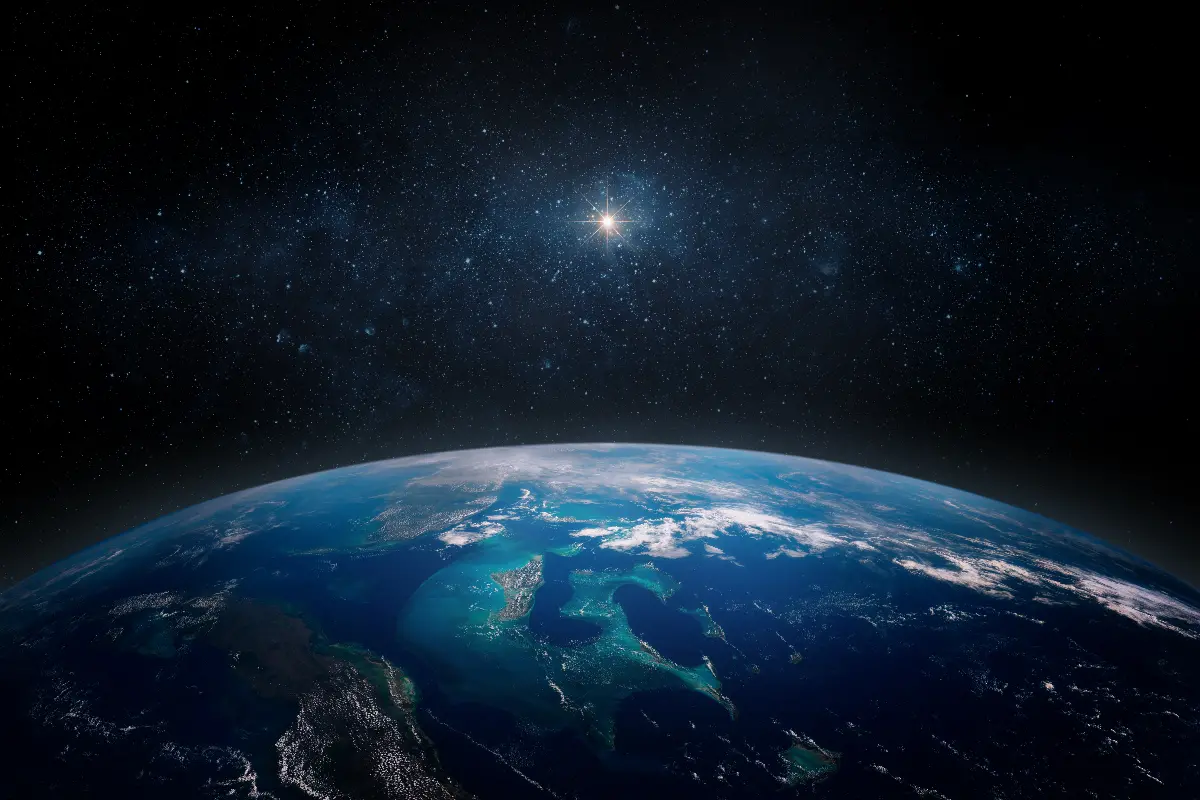In the vastness of the cosmos, amidst the trillions of celestial bodies spanning the observable universe, Earth emerges as a vibrant blue dot teeming with life. This remarkable phenomenon often leaves us pondering: Why does Earth stand out as the seemingly perfect abode for life? From its ideal location to the complex interplay of its constituent systems, Earth possesses unique properties that have allowed life to flourish. Let's embark on a scientific odyssey to uncover the intricacies that make our planet the life-sustaining oasis it is known to be.

The celestial sweet spot we often refer to as the "Goldilocks Zone," or more formally, the habitable zone, is the first on our list of Earth's extraordinary features. This term describes the optimal range of distance from a star where a planet can maintain liquid water on its surface—neither too hot nor too cold. Our Earth is situated at just the right distance from the sun to ensure temperate conditions that support a liquid water cycle. It's this delicate balance that provides one of the fundamental ingredients for life as we know it: water.
Water is indeed a miraculous molecule, and Earth's surface is approximately 71% covered by it. It's a superb solvent, facilitates vital chemical reactions, and provides a fluid medium for the transport of nutrients. Even on our own planet, life is found in water-rich environments ranging from the boiling hot springs of Yellowstone to the icy subterranean lakes of Antarctica, proving its resilience and dependence on this life-giving substance.

But the suitability for life extends beyond just Earth's perfect positioning. The planet's size and corresponding gravity form the second cornerstone of our life-supporting environment. Earth's mass isn’t too large, preventing a crushing gravity and a thick, hydrogen-heavy atmosphere like Jupiter's, nor is it too small, which would prevent it from holding onto an atmosphere at all, much like Mercury. Earth’s gravity is sufficient to retain a rich atmosphere with a mixture of gases, including oxygen and nitrogen, which are vital for the survival of many life forms.
Moreover, gravity plays a pivotal role in shaping Earth’s interior mechanisms. It triggers the movement of tectonic plates, resulting in geothermal energy and the carbon-silicate cycle. These processes are essential not only for regulating Earth's climate over millennia but also for renewing the surface with fertile land via volcanic eruptions and recycling carbon through subduction zones. This tectonic activity is an engine for biodiversity, fostering different habitats and creating opportunities for life to adapt and evolve.

While we owe our existence to the sun's life-giving rays, the planet could not sustain life without its magnetic personality—literally. The third fact that stands out in Earth's dossier is its magnetic field, a protective shield generated by the churning of liquid iron in Earth's outer core. Dubbed the magnetosphere, it deflects the bulk of solar wind—streams of charged particles emanating from the sun that could erode the atmosphere and batter life with harmful radiation. Mars, our neighbouring planet, serves as a cautionary tale; with a weak magnetosphere, its once thicker atmosphere has been stripped away over time, leaving a desolate landscape.
The magnetic field does more than just protect; it also preserves. By preventing the solar wind from stripping away our atmosphere, it has helped ensure the stability of Earth's climate over long periods, providing a stable environment for evolution to work its wonders. Without this invisible guardian, Earth's evolution could have taken a drastically different, and possibly barren, path.

Lastly, Earth's precious moon lurishly adds to the list of elements critical to sustaining life. The moon is unusual in its size relative to the planet it orbits, and this has profound consequences for life on Earth. Its gravitational influence stabilises Earth's axial tilt, which controls the seasons. Without the moon's steadying effect, it is possible that Earth’s spin axis might be more variable, leading to extreme climate fluctuations and potentially rendering it inhospitable to sophisticated ecosystems like those that exist today.
Furthermore, the tidal forces resulting from the interplay between Earth and the moon have substantial effects on marine life. Tidal zones create unique ecosystems, and the powerful phenomena of tides mix nutrients, dissipate heat, and encourage the movement of organisms. It is speculated that the transition from ocean to land life, a pivotal chapter in the story of life on Earth, may have been aided by the regular ebb and flow governed by the moon.
In a universe brimming with planets, the exceptional qualities of Earth highlight an intricate tapestry woven with scientific marvels. Our planet’s perfectly calibrated attributes—from its favourable location in the solar system, just-right gravity, life-protecting magnetic field, and fortuitous influence of its moon—converge to create the quintessential conditions for nurturing the diversity of life. As we gaze up into the night sky, we are reminded of Earth's rarity in the vast cosmic expanse—an oasis of life in the daunting desert of the cosmos.
Our perennial quest for extraterrestrial beings and habitable worlds continues to drive the fields of astronomy and astrobiology. Yet, as we search for Earth-like planets orbiting distant stars, we are increasingly aware of the treasure we have and the delicate balancing act that enables our survival. The synthesis of these elements cannot be easily replicated, making Earth our unique and perfect home in the universe.
